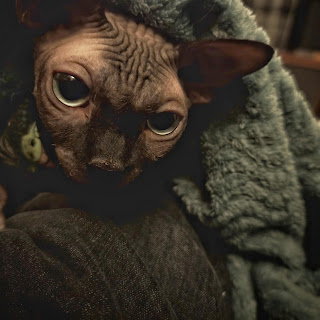🩺 Why Heart Checks Matter—Especially for Certain Breeds
When we think of keeping our cats healthy, we usually focus on the obvious things: diet, vaccinations, flea treatments. But what about their heart? Just like humans, cats can suffer from heart conditions—some of which show no obvious symptoms until it’s too late.
One of the most common—and serious—conditions affecting cats is Hypertrophic Cardiomyopathy, or HCM.
💔 What Is HCM in Cats?
HCM is a disease where the muscular walls of the heart thicken, making it harder for the heart to pump blood effectively. Over time, this can lead to congestive heart failure, blood clots, or even sudden death.
It’s the most commonly diagnosed cardiac condition in cats, and while it can affect any breed, some—including the Sphynx, Maine Coon, Ragdoll, and British Shorthair—are more genetically predisposed.
🧬 Is It Genetic?
Yes, in many cases, HCM has a hereditary component. Specific gene mutations have been identified in some breeds (notably Maine Coons and Ragdolls), and while genetic testing is available for some lines, regular heart screenings remain the most reliable way to detect HCM early—especially in breeds like the Sphynx, where research is ongoing.
🔍 Symptoms Can Be Subtle—Or Nonexistent
One of the most difficult things about HCM is that many cats show no symptoms at all in the early stages. When signs do appear, they may include:
-
Laboured or rapid breathing
-
Lethargy or weakness
-
Sudden collapse
-
Hind limb paralysis (caused by a blood clot)
By the time these symptoms are noticeable, the disease may be advanced. That’s why routine screening is so important.
🩺 How Is HCM Diagnosed?
The gold standard for diagnosing HCM is an echocardiogram—an ultrasound of the heart performed by a trained veterinary cardiologist. This test shows the size and function of the heart’s chambers and can detect thickening before any clinical signs appear.
Some vets may also perform chest X-rays or electrocardiograms (ECG), but the echo is key for an accurate diagnosis.
🐱 Wilfred’s Story: Why We’re Getting Him Checked
As a young Sphynx, Wilfred is energetic, affectionate, and full of personality. But like many Sphynx cats, he’s at increased risk for HCM, even if he looks perfectly healthy.
That’s why we’ve booked him in for a preventative echocardiogram—not because he’s unwell, but because early screening can make all the difference. Ideally, he’ll get the all-clear. But if there is a problem, we’ll catch it early enough to manage it properly.
✅ Should You Get Your Cat Checked?
If you have a Sphynx, Maine Coon, Ragdoll, British Shorthair, or any cat with a family history of heart disease, it’s worth discussing HCM screening with your vet—even if your cat is young and symptom-free.
Regular checks are recommended starting around age 1 and continuing yearly or every other year, depending on your vet’s advice and your cat’s risk level.
💡 Early Detection Saves Lives
HCM can’t be cured, but it can often be managed with medications and lifestyle adjustments—especially when caught early. In some cases, cats with HCM live long, happy lives with minimal intervention.
🩺 Knowledge is power. A simple test could give you peace of mind—or the chance to take action before symptoms start.
Have you had your cat screened for HCM?
Drop a comment or share your experience—your story might help someone else make an informed decision for their feline friend. 🐾
#CatHealth #HCMInCats #FelineCardiology #SphynxCare #KittenKaboodle


Comments
Post a Comment